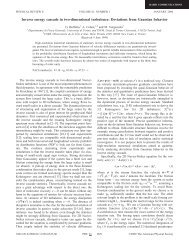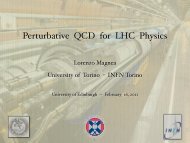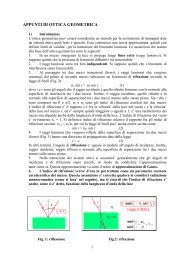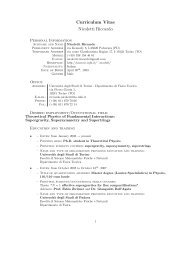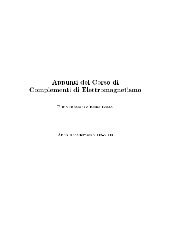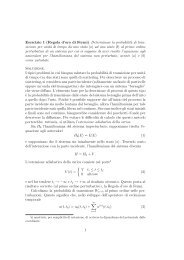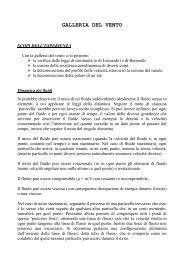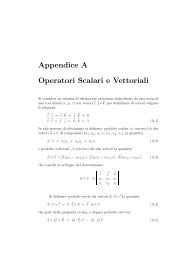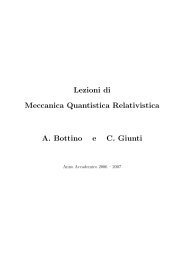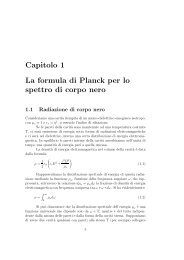Appunti di Meccanica Statistica - INFN
Appunti di Meccanica Statistica - INFN
Appunti di Meccanica Statistica - INFN
- No tags were found...
Create successful ePaper yourself
Turn your PDF publications into a flip-book with our unique Google optimized e-Paper software.
100 CHAPTER 4. SISTEMI CRITICIriduce all’ equazione funzionalef(t, h) = 1 s df(t syt , h s y h) . (4.6.11)Questa equazione esprime il fatto che la densità <strong>di</strong> energia libera f non è separatamentefunzione <strong>di</strong> t e <strong>di</strong> h, ma <strong>di</strong> una opportuna loro combinazione. E’ danotare infatti che s > 1 è un parametro arbitrario e la (4.6.11) ci <strong>di</strong>ce appunto chela f(t, h) non <strong>di</strong>pende da esso 5 . Un modo rapido per eliminare s è <strong>di</strong> fissare unavolta per tutte il valore <strong>di</strong> t ′ (s) = t o da cui1s = ∣ o y t ∣tt ∣(4.6.12)che inserita nella (4.6.11) dàf(t, h) = |t| d y t Φ(h/|t| y hyt) . (4.6.13)Da questa proprietà <strong>di</strong> scala dell’ energia libera possiamo ricavare tutte le leggi<strong>di</strong> potenza per le varie funzioni termo<strong>di</strong>namiche che sono riportate nella tabella4.1, da cui seguono subito le due scaling relations da aggiungere alle altre due cheabbiamo ricavato nel & 4.5.2.α + 2β + γ = 2α + β + β δ = 2Osservazione: mentre la (4.6.13) permette il <strong>di</strong> calcolare imme<strong>di</strong>atamente α, βe γ, il calcolo <strong>di</strong> δ richiede la valutazione <strong>di</strong> f a t = 0 che è incompatibile con lascelta <strong>di</strong> s data dalla (4.6.12). Una scelta consistente può essere invece s = | ho | 1y hhche, inserita nella (4.6.11), permette <strong>di</strong> determinare subito anche δ.È facile ricavare, in analogia con quanto si è fatto nel caso dell’energia libera,un’analoga relazione funzionale per il correlatore connesso. Supponiamo al solito<strong>di</strong> essere molto vicini al punto fisso e che le uniche costanti <strong>di</strong> accoppiamentorilevanti siano t e h. L’Hamiltoniana trasformata H ′ saràH ′ = H ′ o − ∑ xh ′ x S′ x5 Per esempio l’equazione funzionale f(x, y) = f(s x, s y) ∀ s ha come soluzione generalef(x, y) = φ(x/y) dove φ è una funzione arbitraria <strong>di</strong> un solo argomento.




